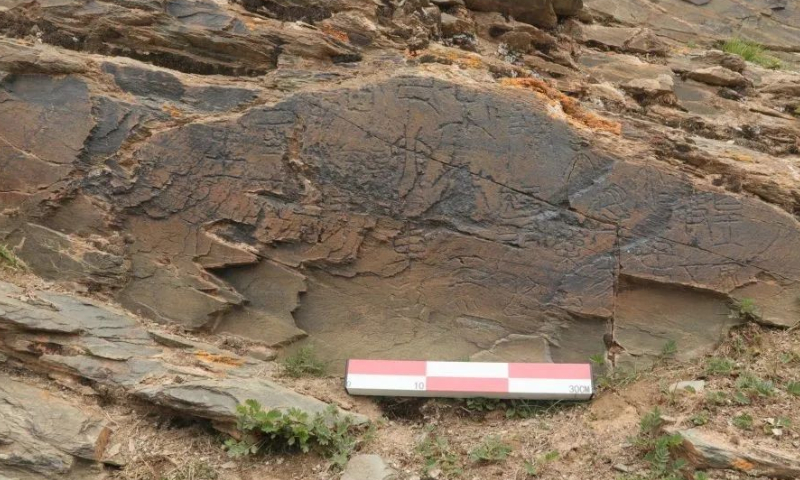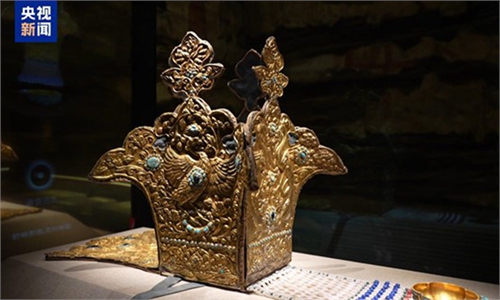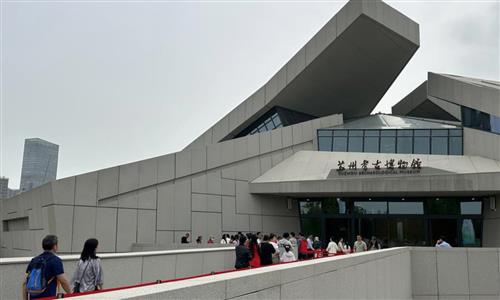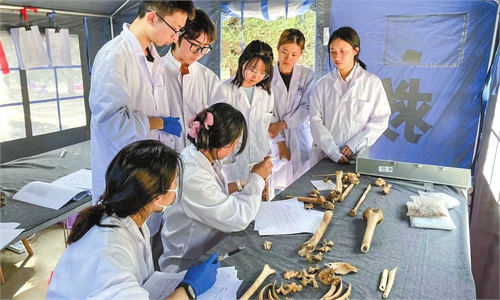ARTS / CULTURE & LEISURE
Experts challenge authenticity of Emperor Qin Shihuang’s ‘Herb-Gathering Inscription’

A suspected Qin Dynasty (221 BC-206 BC) cliff inscription had been discovered on the shores of Zhaling Lake in Northwestern China’s Qinghai Province.
Tong Tao, a research fellow at the Institute of Archaeology, Chinese Academy of Social Sciences (CASS), published an article in the Guangming Daily on Sunday, saying that a suspected Qin Dynasty (221 BC-206 BC) cliff inscription had been discovered on the shores of Zhaling Lake in Northwestern China’s Qinghai Province. The inscription states that Emperor Qin Shihuang dispatched envoys to Kunlun Mountains to collect medicinal herbs. Following the publication, several professors and scholars expressed doubts about the inscription’s authenticity, suggesting it may be a modern forgery.
According to the article, archaeologists reportedly discovered a 37-character cliff inscription attributed to the Qin Dynasty during a recent field survey on the northern shore of Zhaling Lake.
Carved in typical Qin small seal script, the inscription suggests that in the 26th year of Emperor Qin Shihuang’s reign, the emperor dispatched a court official, along with a group of fangshi (alchemists or practitioners of esoteric arts), to Kunlun Mountains in search of an elixir of immortality. The group is said to have arrived at the site (by the shores of Zhaling Lake which is near the Yellow River’s source) in the third lunar month that year, before traveling another 75 kilometers to reach their destination.
The article argues that the content and geographic location of the inscription resolve longstanding historical debates over the precise whereabouts of Kunlun and the Yellow River’s source. It further claims the inscription fills a gap in historical records by documenting Emperor Qin Shihuang’s expedition to obtain elixirs after unifying the nation, according to a report by the China News Service.
On social media, some experts and archaeologists, including professor Xin Deyong from Peking University questioned the authenticity of the inscription’s interpretation. “If the interpretation is as presented, I strongly suspect it to be a modern forgery – this would represent a new ‘height’ in the fabrication of inscriptions,” Xin said.
Echoing Xin’s skepticism, Liu Zongdi of the School of liberal arts at Beijing Language and Culture University also raised doubts. Citing a comment from one of his students, Liu pointed out that Records of the Grand Historian (Shiji) records Yingzheng as having unified the six states and adopted the title of emperor in the 26th year of his reign. Yet, the inscription claims that the court official had already arrived at the river’s source by the third lunar month of that same year.
Liu further argued that historical records show it took more than four months for Yuan Dynasty officials to travel from Linxia to the Yellow River’s source. By that measure, the Qin envoy’s departure would have had to occur in the previous winter or earlier – before Yingzheng had even declared himself emperor. Referring to him as “emperor” in the inscription, therefore, contradicts historical chronology. Additionally, Liu questioned the plausibility of embarking on a medicinal expedition during the harsh winter on the high-altitude plateau.
In response to the online controversy, staff at the Institute of Archaeology told the Global Times that Tong is currently on a field expedition and has not yet been reached for any comment.
An anonymous staff member from the Chinese Academy of Archaeology CASS told the Global Times on Wednesday that archaeology is a discipline driven by constant revision and open debate, and that academic skepticism is both common and necessary.
“A dialectical view of history is essential to reconstructing the past,” the staff member said.
“From a research perspective, it’s perfectly normal for differing opinions to emerge in academic discussions,” the staff member noted. “Questioning and debate are essential drivers of deeper investigation.”
According to the staff member, fieldwork related to the inscription has not yet been fully completed, and several key issues still need further scientific verification. The one emphasized that Tong has extensive experiences in on-site investigation and that his findings should be treated with academic seriousness.
Archaeological discoveries are never the result of a few days’ work, but the outcome of long-term field investigations and research by academic teams. Their validity requires extended periods of verification and scholarly scrutiny, according to the China News Service.
“There is only one historical truth,” Wang Xincheng, head of an archaeology team at Jilin University, told the Global Times on Wednesday. “But the path to understanding it is open and evolving. Academic debate is the very process through which we inch closer to that truth.”
“In an age of rapid information flow, archaeologists may have to transition from being solely researchers to becoming active interpreters,’’ he noted.
According to Wang, when a discovery draws intense public attention, archaeologists have a responsibility to explain the research process, acknowledge uncertainties and clarify why scientific disputes are not exceptions, but rather integral to scholarly exploration.
“Engaging with doubt and pursuing the truth is the norm in archaeology, and it’s what gives it enduring value,” he said.



